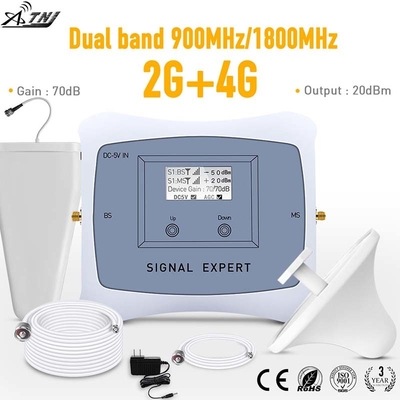2G 4G Mobile Phone Signal Repeater Booster Cell Phone Amplifier 1800MHz Network Booster
| Frequency Range: | According To Customer's Need,Uplink:1710-1785MHz,Downlink:1805-1880MHz |
|---|---|
| Gain: | 70dB,UL Gp≥68 DL Gp≥70, Uplink Gp≥68dB Downlink Gp≥68dB, |
| Output Power: | 17-20dBm |




















